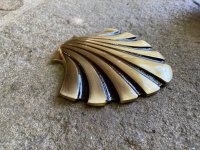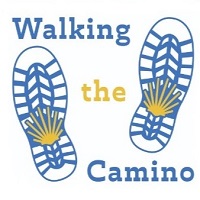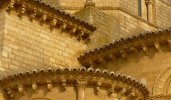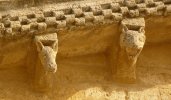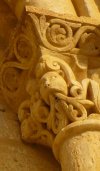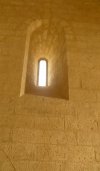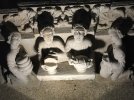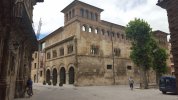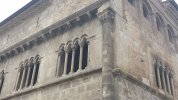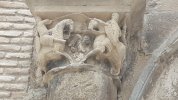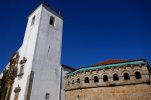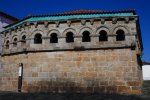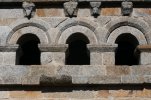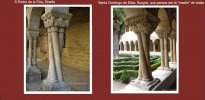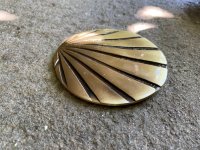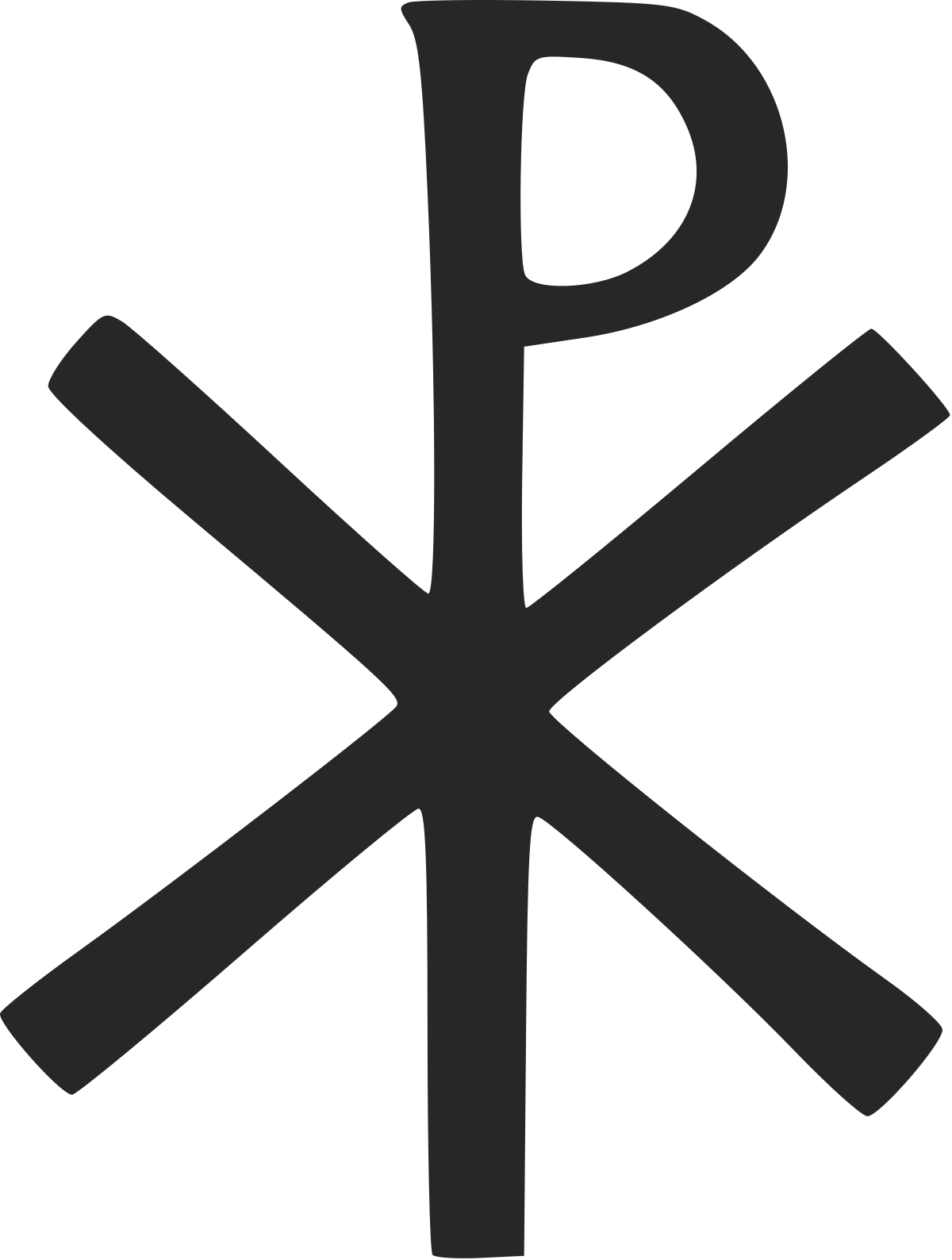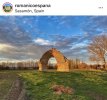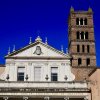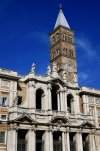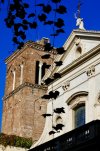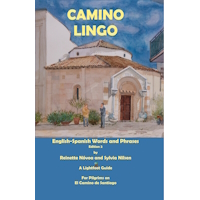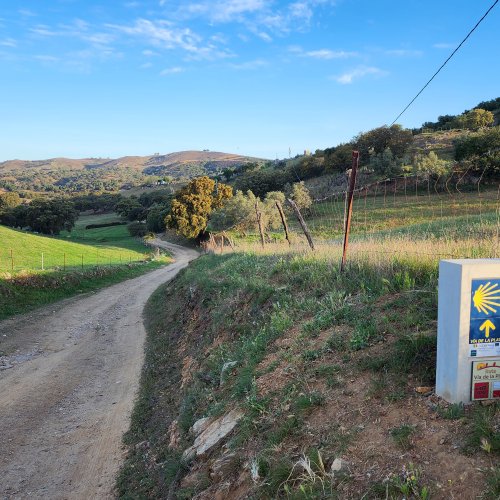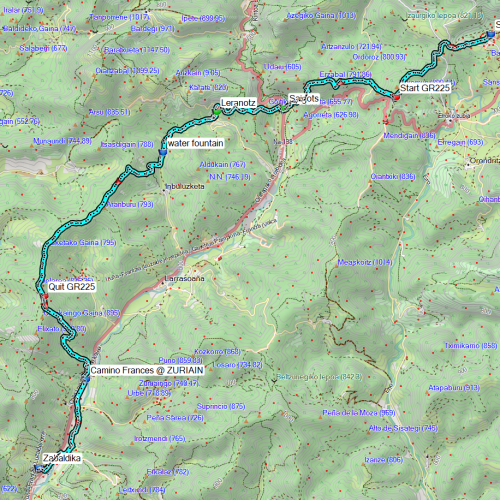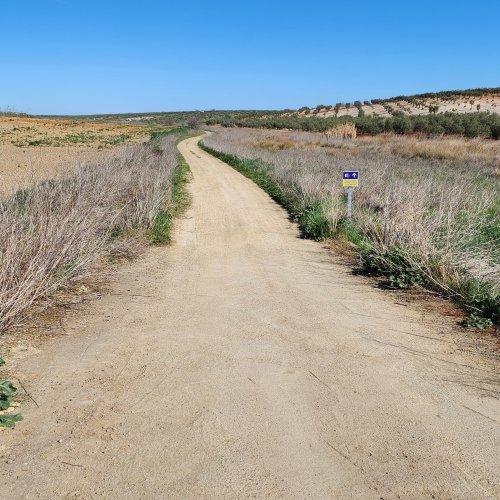I came across a photo I had taken of the portal of the small church in Cirauqui. Cirauqui is located on the eastern section of the Camino Francés, just before you walk down on a bit of old Roman road and then over an old Roman bridge. Today I noticed something I hadn't noticed at the time. It's a Christian symbol called a
Chrismon and it looks like a P with additional symbols, sometimes the Greek letters
alpha and
omega are added, meaning beginning and end, or rather the eternity of God's existence that has no beginning and no end.
In the Cathedral of Santiago, you see the two Greek letters in the less usual sequence of
omega and
alpha, and you may be told or may have read that this means that your camino really only starts after your arrival in Santiago ...
Well, the beauty of Romanesque sculpture is that we often don't know, and will never know, what the sculptures meant to those who created them and viewed them some 800 years ago. In any case, the sequence
ω A (instead of
A ω) isn't as rare in Romanesque art as some seem to think and can be interpreted in other ways. Here's a photo of the portal in Cirauqui and of the fairly similar portal of San Pedro in Estella.




